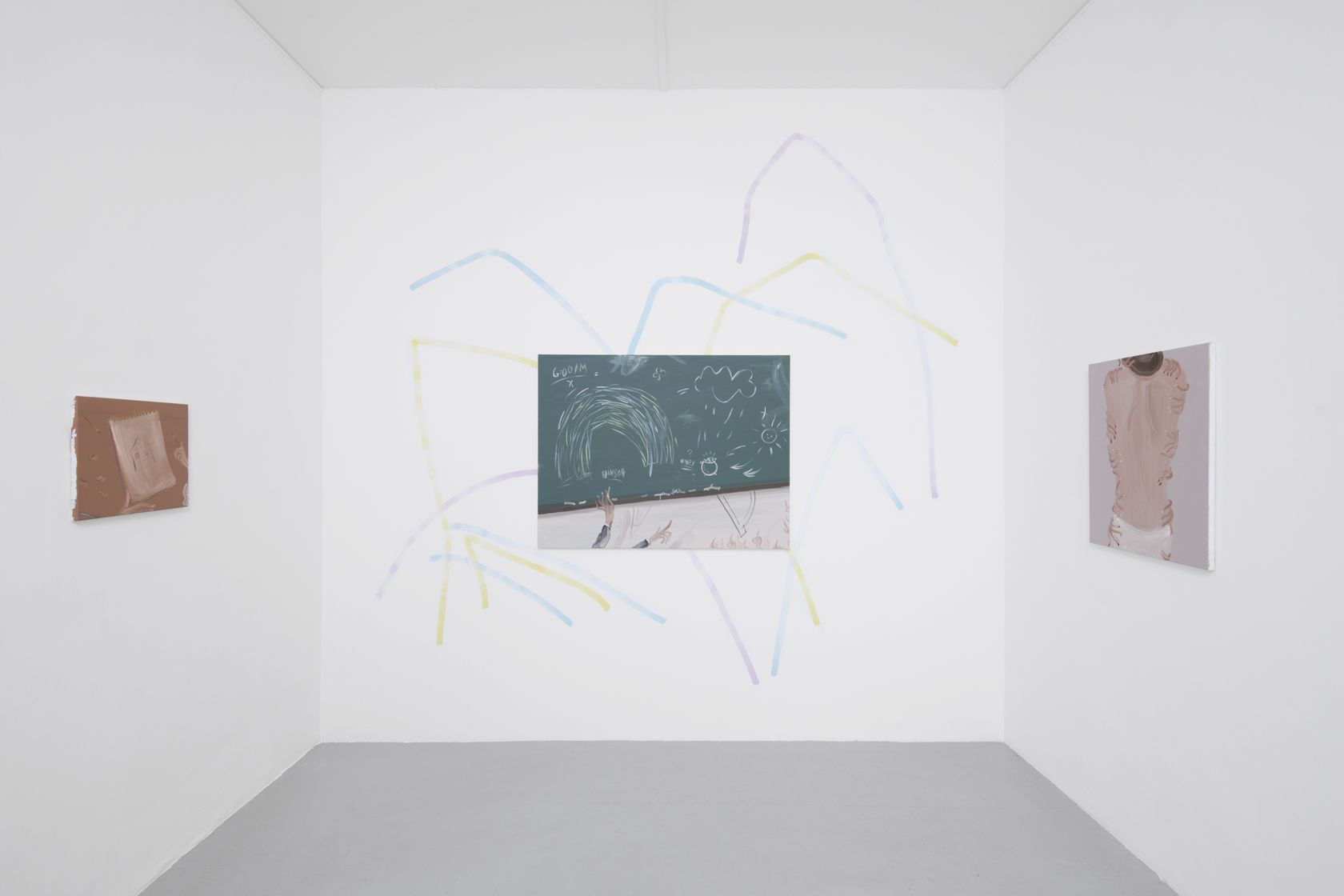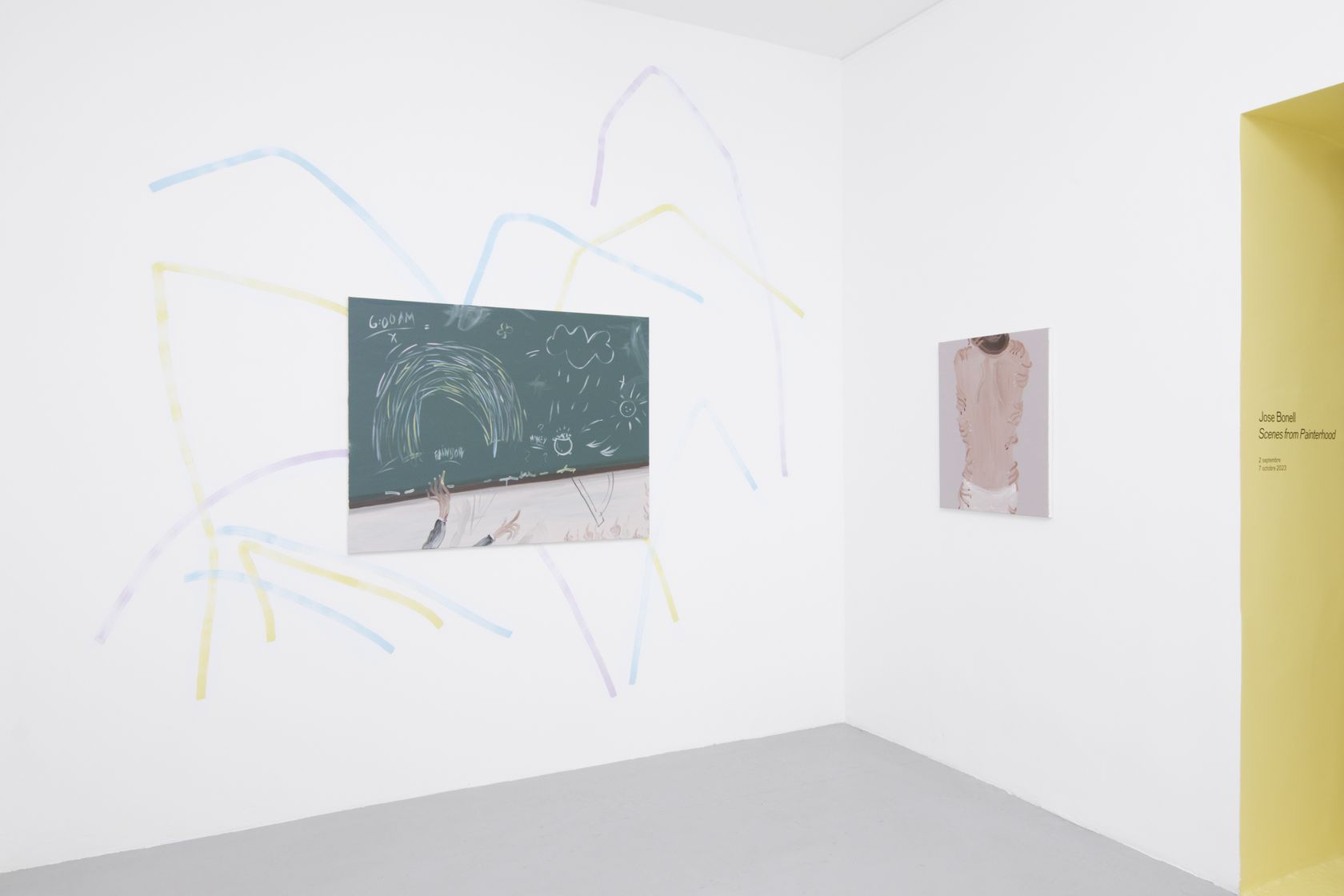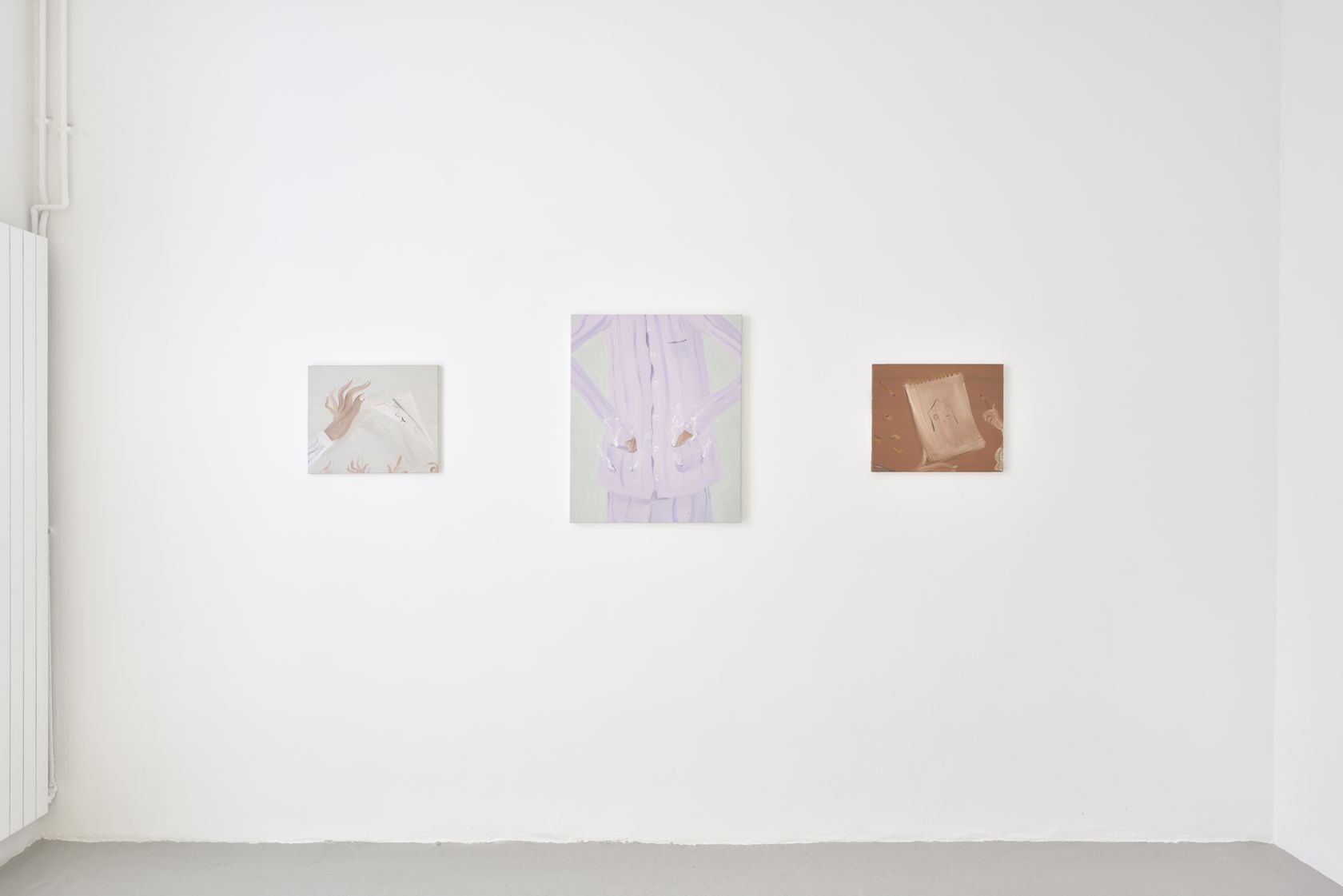-
 1/3
1/3
Jose Bonell, Scenes from Painterhood
-
 2/3
2/3
Jose Bonell, Scenes from Painterhood
-
 3/3
3/3
Jose Bonell, Scenes from Painterhood
There’s the story of a duck, looking on with surprise at the human by its side, who is putting on flippers and getting ready to take a swim (Untitled, 2023). In Fast Puppy (2023), there’s a dog in a hurry, with an elegant bow at the end of its tail, hoping to outrun the one in Giacomo Balla’s Dynamisme d’un Chien en Laisse (Dynamism of a Dog on a Lead, 1912). Then there’s the swan who thinks it’s an ostrich, burying its head in the ground in search of new horizons, leaving behind a few feathers and barely recognizable lines and believing itself invisible as it hides its own eyes (Other Worlds, 2023).
Scenes from Painterhood, Jose Bonell’s first exhibition at Semiose, takes its title from a piano piece by Robert Schumann (Kinderszenen or Scenes from Childhood, 1838). There is definitely something childlike in Jose Bonell’s paintings, limpid visions whose rationale sometimes escapes the adults that some children have become… There’s certainly also something of the painters own childhood.
During his youth, spent between two villages of the Catalan coast, Jose Bonell was first drawn to photography, developing a fascination for the work of Henri Cartier-Bresson. His discovery of the history of painting was a true revelation and a year after buying his first camera, he exchanged it for painter’s brushes. There was no longer the need to wait for that crucial instant. From this early school of the image, he did however perhaps retain a taste for those fleeting, vision-like scenes. Bonell draws very little, limiting himself to a few sketches in notebooks. The real performance takes place on the canvas, in the energy he puts into individual work sessions, using rapid, sweeping brushstrokes that evoke Japanese painting, creating an effect of lightness, reminiscent of watercolors despite his use of oils. In general, one canvas leads to another. And this painterly flow goes hand in hand with the fluidity of dreams.
Jose Bonell supplements his painting with his taste for words, which he sometimes draws in capitals on his canvases. Such is the case with the schoolroom blackboard, framed by a crowd of pointing hands, and on which we can read captions describing the delightful scene sketched out in chalk (The Lesson, 2023). In another painting, the word “Dream” has been written in grains of rice by hands holding chopsticks (A Dream, 2023). “A dream is a dream is a dream” as Gertrude Stein might have said at the sight of this spectacle. In any case, this is not a bowl of rice! Jose Bonell also delves into the magical realism of South American fantasy literature and texts by Silvana Ocampo, Jorge Luis Borges and Julio Cortázar, as well as Max Jacob and Pierre Reverdy. The weeping guitar, played by multiple hands in Agua Para Federico (2023), is a silent tribute to Federico García Lorca.
Jose Bonell describes himself as a story-teller—one of painted tales. He loves painting the hands of femmes fatales, with their long, red fingernails, deft hands seeking out physical pleasure and the pleasure of painting (Le Plaisir, 2023); nonchalant hands folding a paper airplane on which they have written the word “Future” (Future, 2023); the disturbing image of a hand covered in ants (Andalou Malady, 2023), reminiscent of Buñuel and Dalí’s film Un Chien Andalou (1929). These are supple hands that take on an almost sinuous form. They flutter like the wind, the same wind that ruffles the curtains we draw back to catch a glimpse of the moon (New Moon, 2023).
There are also numerous self-portraits, those of a painter hiding from the spectator, showing only a well-rounded belly, judging by a certain state of tension shown by the buttons of his shirt (Deep Sleep, 2023). These strange compositions are imbued with surprising emotional power, reminiscent of Rembrandt’s Flayed Ox (1655) seen through the solitary eyes of surrealism, mysterious images that indiscreet fingers might seek to elucidate. Jose Bonell paints explosions of emotion like the water bursting from a broken pipe in Open Leak (2023). He combines humor with a healthy dose of derision. Self-Esteem (2023) depicts another headless self-portrait: the canvas is placed on an easel and this new Emperor Maximilian is peppered at short range with bullets, forming the outline of a heart where the real heart should be. In another self-portrait, paint drips from the wounds that pierce the painter’s skin (Painter’s Blood, 2023), and in yet another, tufts of dry grass emerge (The Straw Man, 2023)—A straw man exclaiming to the world that painting is merely a decoy.
Anaël Pigeat